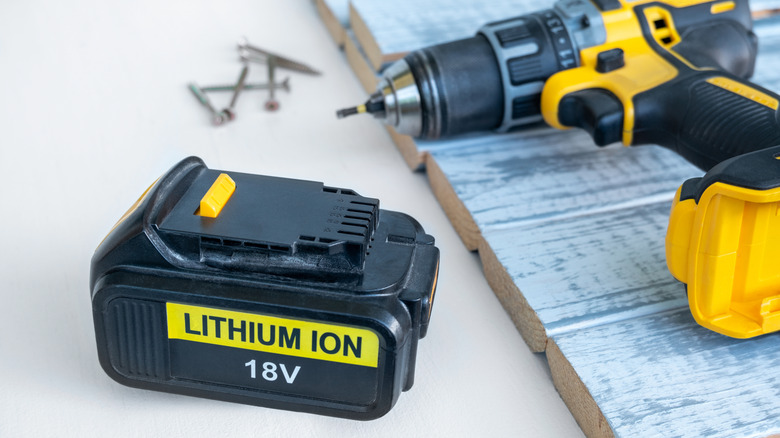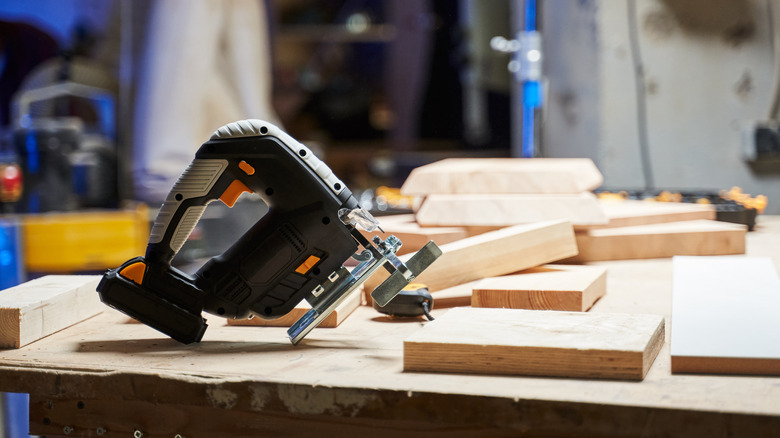Why You Should Remove Batteries From Power Tools Before Storing Them
More and more of the most popular power tool brands are shifting to run on batteries rather than being powered by plug-in cord. And while this shift is convenient — allowing for additional portability and maneuverability — the perk comes at a cost: you need to take proper care of the batteries as well as your tools. It's easy, though, and simply boils down to removing and storing the batteries correctly after use. Doing so can help maximize their lifespan, saving you a ton of money down the line.
It might seem like a fruitless endeavor to remove the battery from your drill today when you know you'll just be picking it back up to use it more tomorrow, but there are legitimate reasons for detaching that outpace sheer convenience. For one, removing the battery prevents any accidental activation. For example, a child would not be able to turn it on if they came across the power tool. Likewise, if the tool shifts overnight on your workbench for some reason, it might potentially end up in a position that could turn it on and drain the battery or damage nearby items.
Removing the battery after use and before storage also eliminates any further battery drain if the tool has a feature that might still use a small amount of power. And completely draining batteries can damage them and stop them from holding a full charge over time. It's also possible for the battery to corrode, which could potentially damage the tool. Simply removing the battery and storing it separately can prolong the life of both the battery and the tool while keeping your workspace as safe as possible.
How to remove and store batteries to prolong their lives
You know you need to remove the battery, but what do you do with it? Store batteries somewhere both cool and dry; your garage might not even be the best place to store batteries. Avoid extreme temperatures and storage near any moisture source, which causes corrosion. Keep the batteries away from other bits of conductive metal to prevent short circuiting; you can easily organize and store your batteries in a toolbox or on a dedicated shelf.
When storing your batteries, don't just set them down. Ensure they're at an ideal charge level first, between 40% and 60%, to reduce stress on the battery cells. For storage over six months, then do a full charge. Do not let batteries continue to sit in the charger once they've finished charging, either; remove them, and set them down alone. And as needed, clean your batteries. Use a clean, slightly damp cloth to wipe off connector plates along with the rest of the exterior. Make sure the battery is dry before storing it, though.
If you have multiple batteries, be sure to rotate through them; don't let one or all of them sit around too long. When they do sit for extended periods, their overall capacity lessens, and no one wants that! Using them at least once every three months keeps them healthy. Otherwise, simply follow any manufacturer recommended guidelines. With these tips, your power tools' batteries will stay ready for any task for years to come.

